Polestar 2 (2022) Review
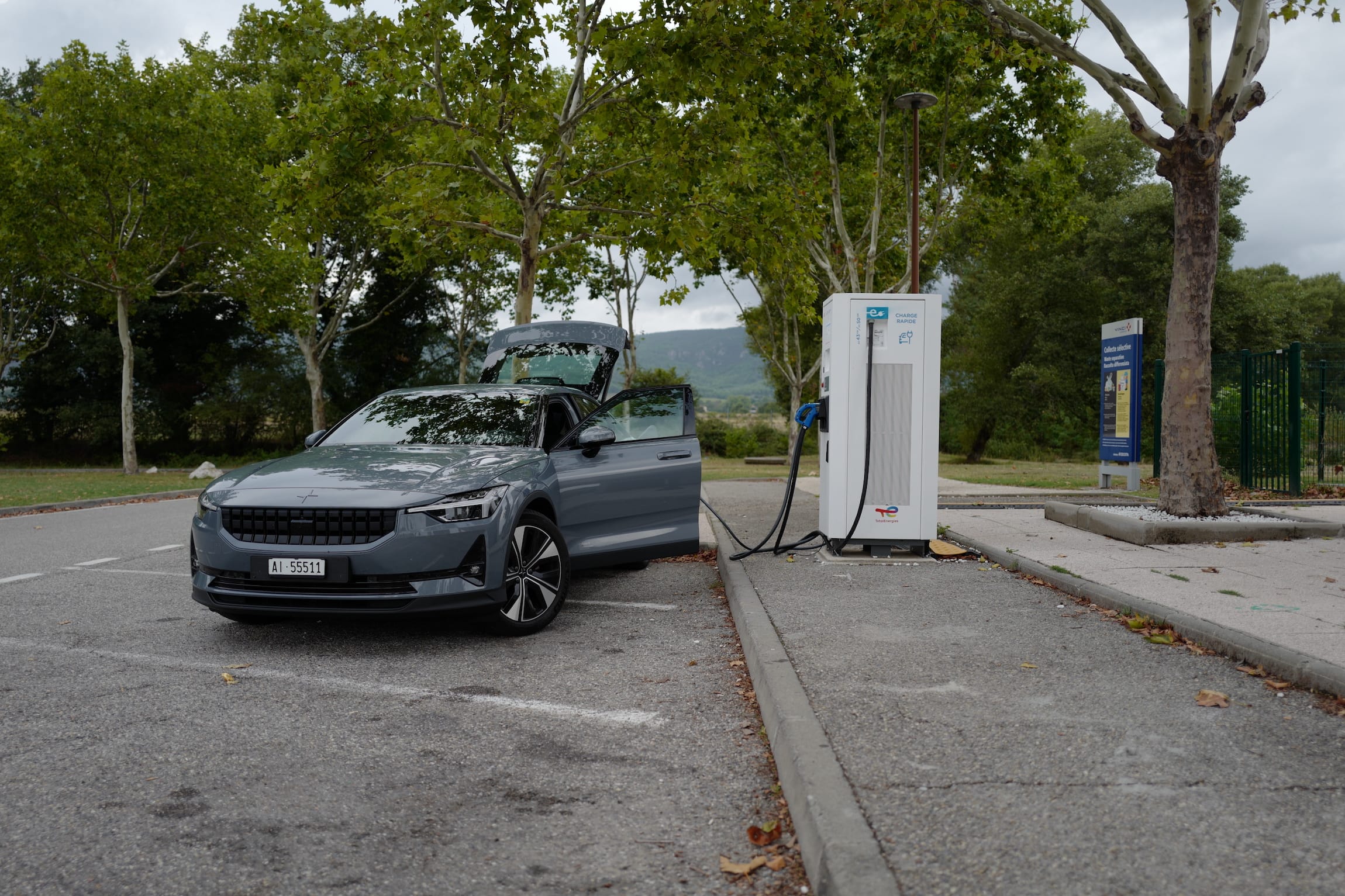
I rented a Polestar 2 through Europcar over the weekend. This was my first EV-experience outside of being the passenger in an Uber Prius. I got the car with the Pilot package, meaning it had Adaptive Cruise Control keeping speed and distance to the car ahead, Pilot Assist with lane-keeping using the cameras and radar and Collision Warning where the car automatically brakes if it gets too close to an obstacle.
Charging, while I learnt a lot during this first EV experience, was a mess. Europcar handed over the car with 100% battery and 400km WLTP range. At the point of pickup I wasn’t aware of the range estimate being based on WLTP and not a real-world projection, and I didn’t know there was a way to change the setting. I didn’t know much about charging speeds, connectors, charging curves, the importance of battery voltage, or the effect of highway driving on range. The experience was enlightening.
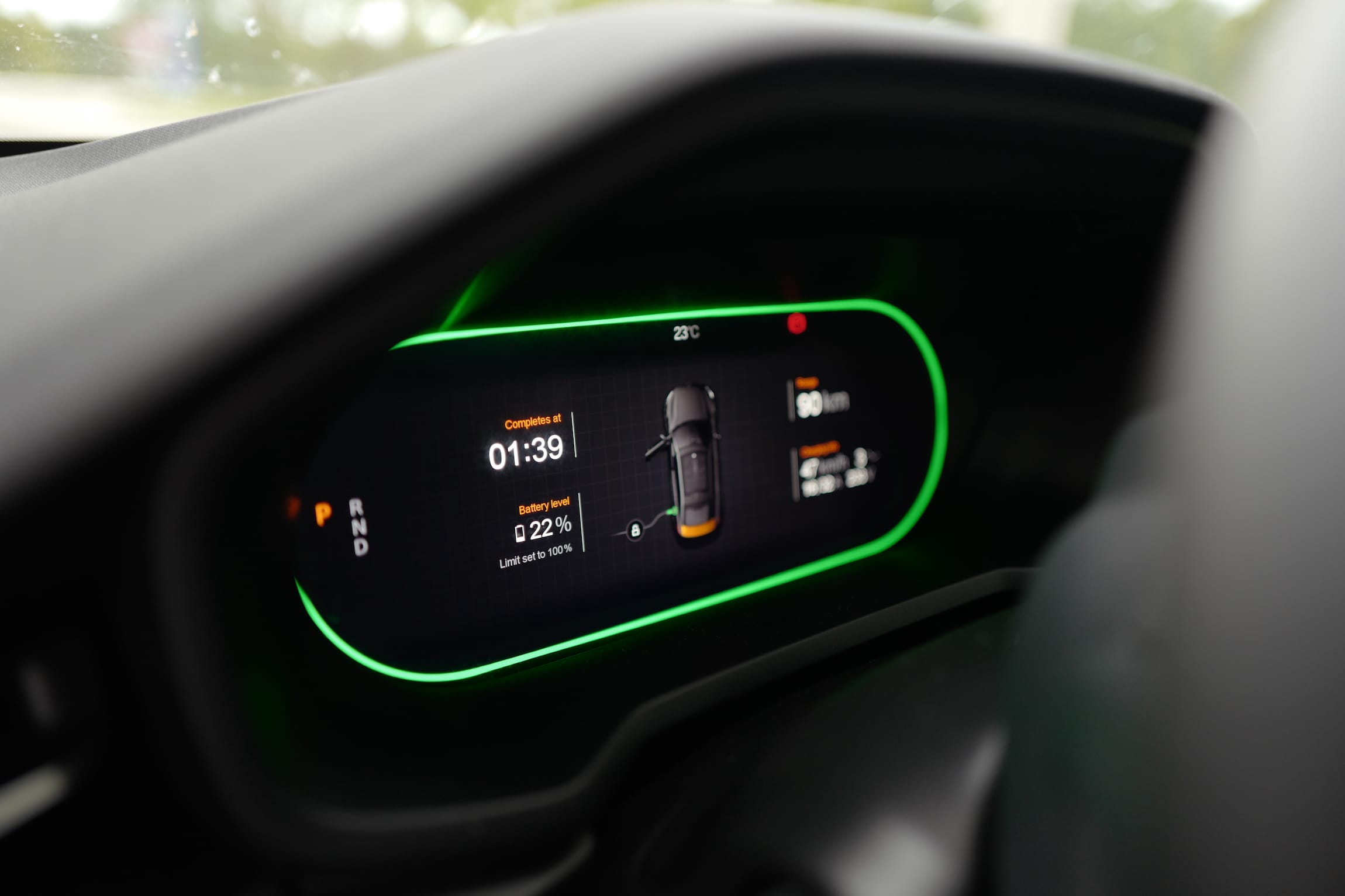
The Polestar’s charging curve drops off rapidly. The 400V battery on the dual-motor model I rented has a capacity of 78kWh. On an empty battery (10–20% state-of-charge (SoC)) it starts rapidly, with 150kW, but drops off to 135kW at 40% SoC. Around 80% the speed drops to 40kW, which renders a full charge on a public charger pointless. On the highway, this wasn’t a problem, as the car’s battery use aligned with my personal needs for a break. Every two-and-a-half hours, I stopped for half an hour to recharge both my own energy and the car’s. I would have liked to halve the duration of those breaks. Taking a break every ~200km felt good, but after about 15 minutes it felt like I was waiting for the car.
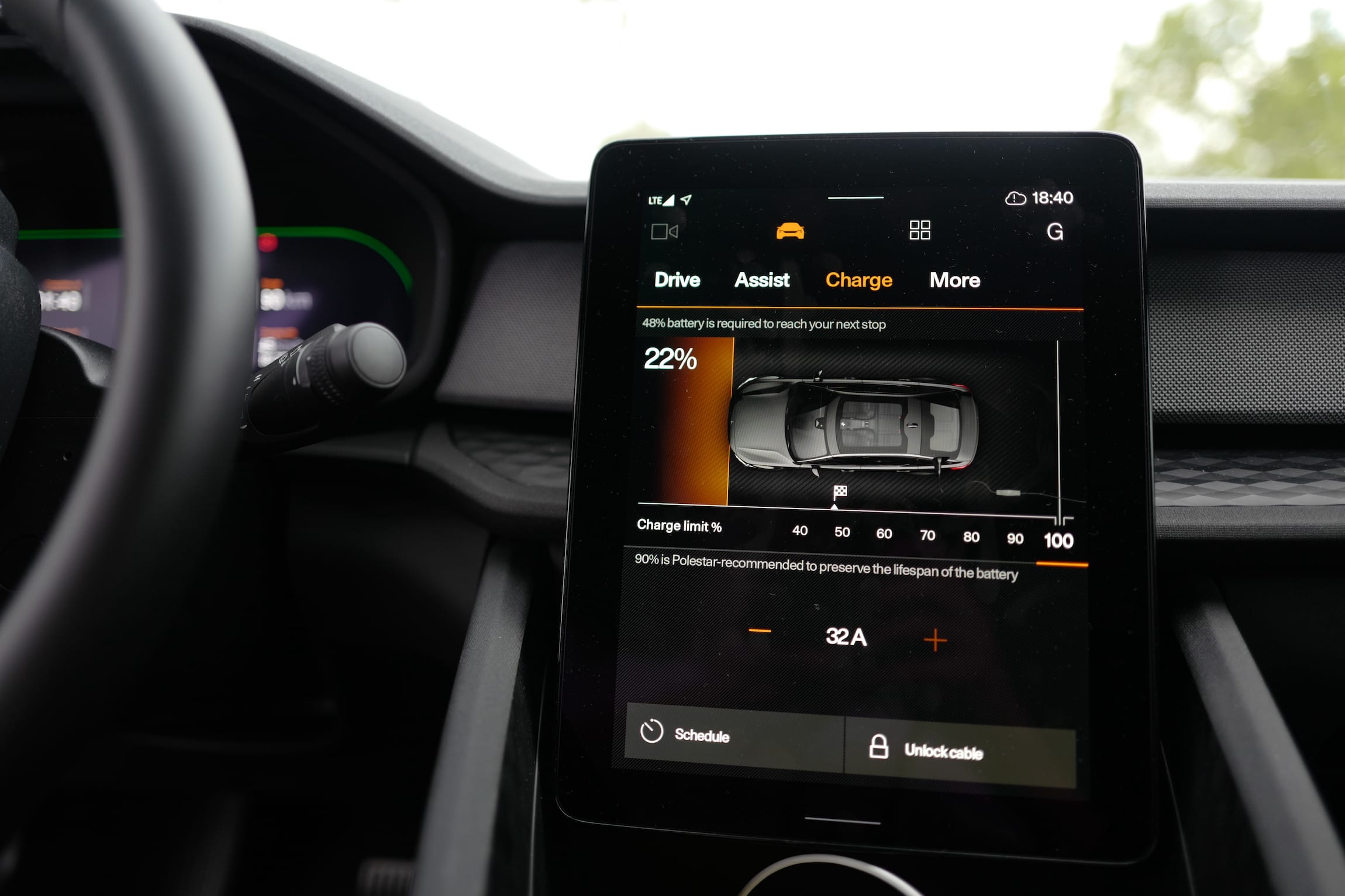
Once we reached the South of France, charging infrastructure became more of an issue. The route planner recommended a rapid-charger right after a péage, which was impractical and with 30% SoC I decided to skip it. At the next stop, all rapid-chargers were broken, and I connected the car to a 43kW charger, not knowing how slow this would be. After half an hour the car gained 2%, it got late in the day, and I got tired of driving and waiting. I looked for a rapid charger, found one at a hotel off the highway, and went there. That charger was on the app I was using to unlock and pay for them, and I had to use their proprietary website and paid online. The hotel reception was of no help — there was nobody. None of this is the fault of the Polestar, but it nonetheless marred my first EV experience.
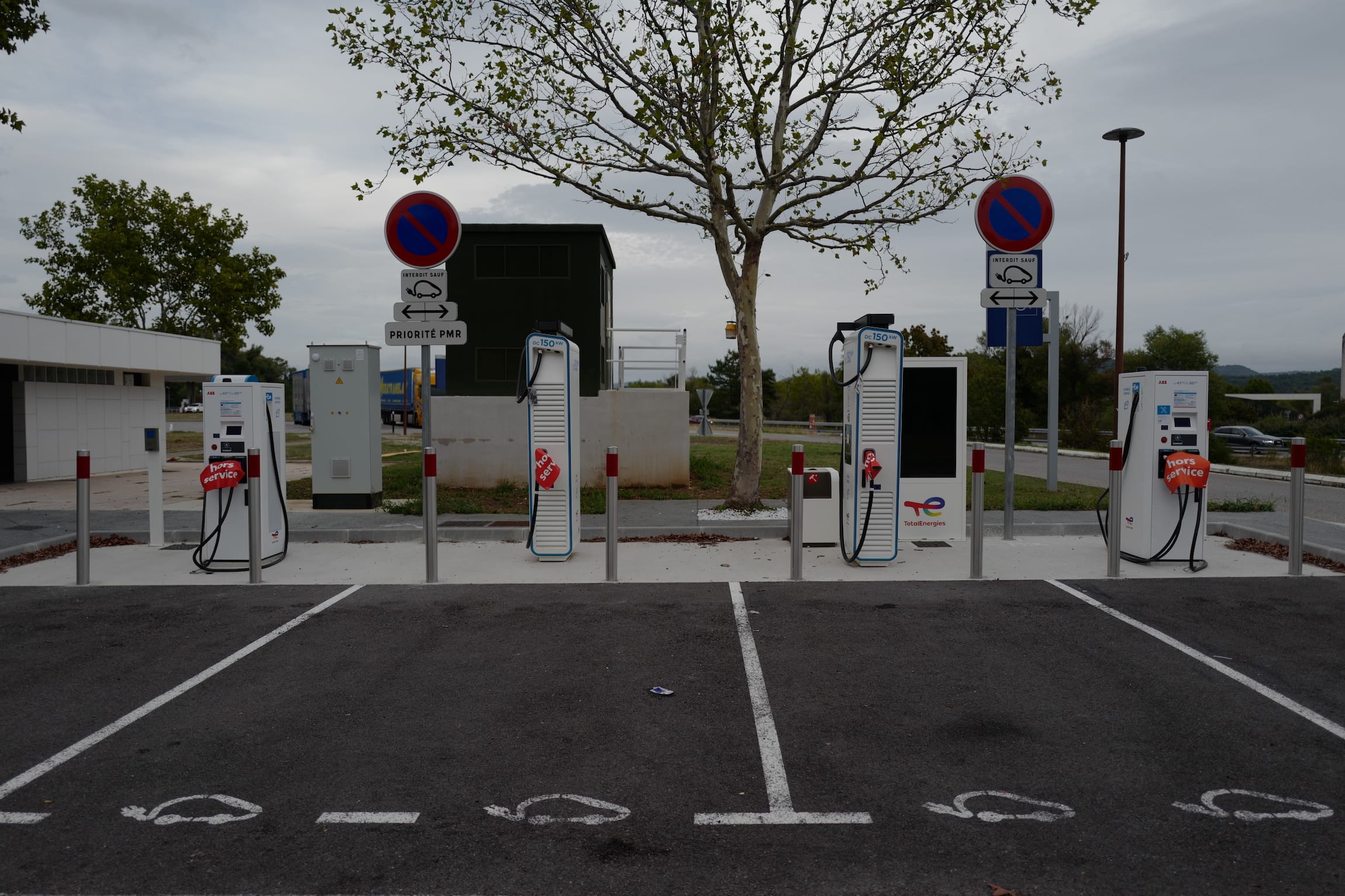
It got dark. We left the hotel parking lot with enough charge to make it to our destination, and some battery to spare, just in case. Shortly after pulling out, we were routed through a winding forest road and a torrential rain started. We picked up the car at 8:00 and arrived at our destination at 22:00.
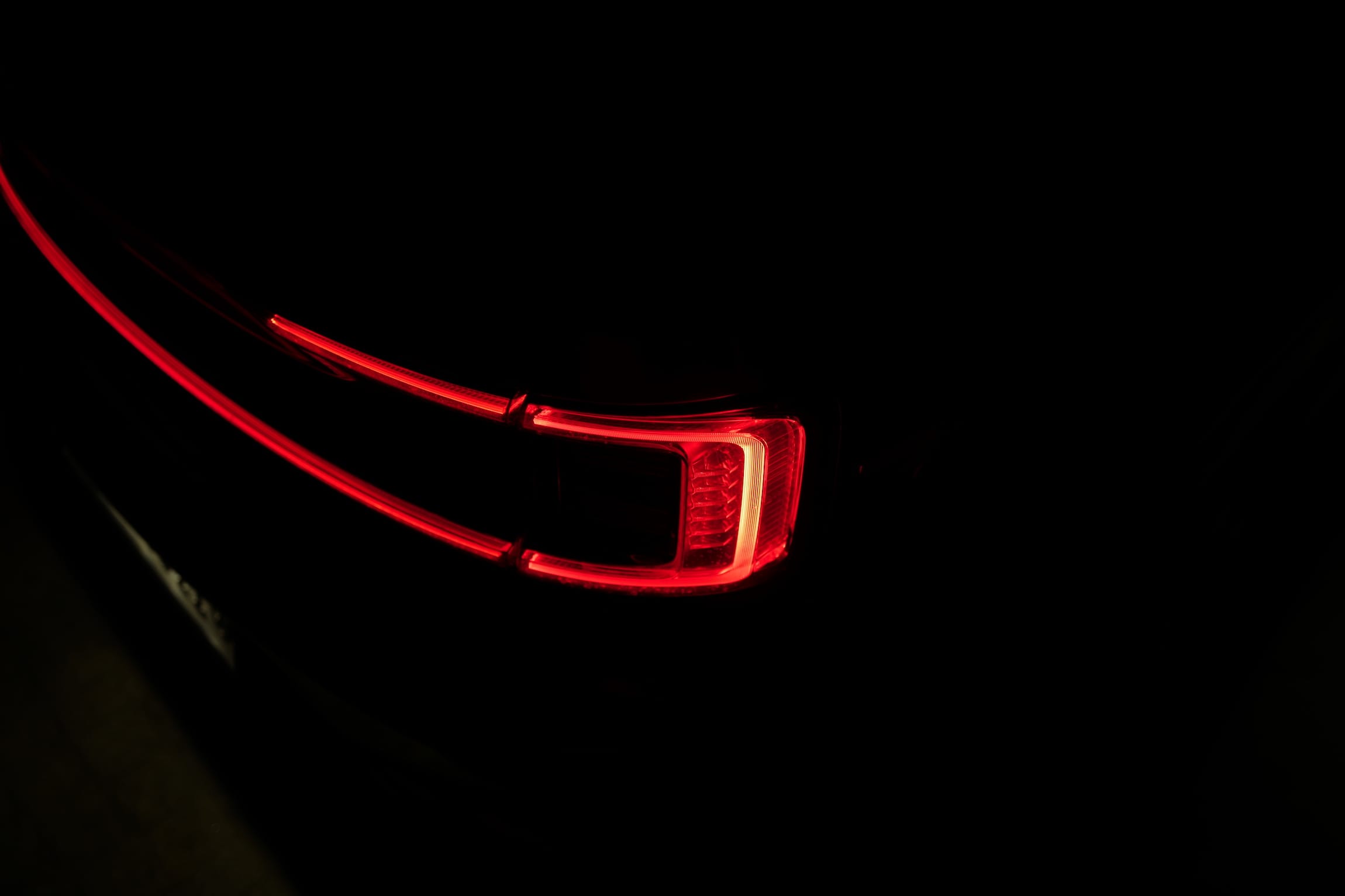
The next day, I wanted to charge the car. Europcar didn’t provide the cable to charge at home, defeating the main benefit of an EV. Their reasoning was that it would overload the home. My reasoning is that this should be my problem, not theirs. The only rapid-charger in town was at a Lidl, but the advertised 120kW only delivered 60kW. After about an hour, the car charged from 20% to 90%, and I left. Driving around town revealed that indeed, all other chargers were 22kW, and were occupied.
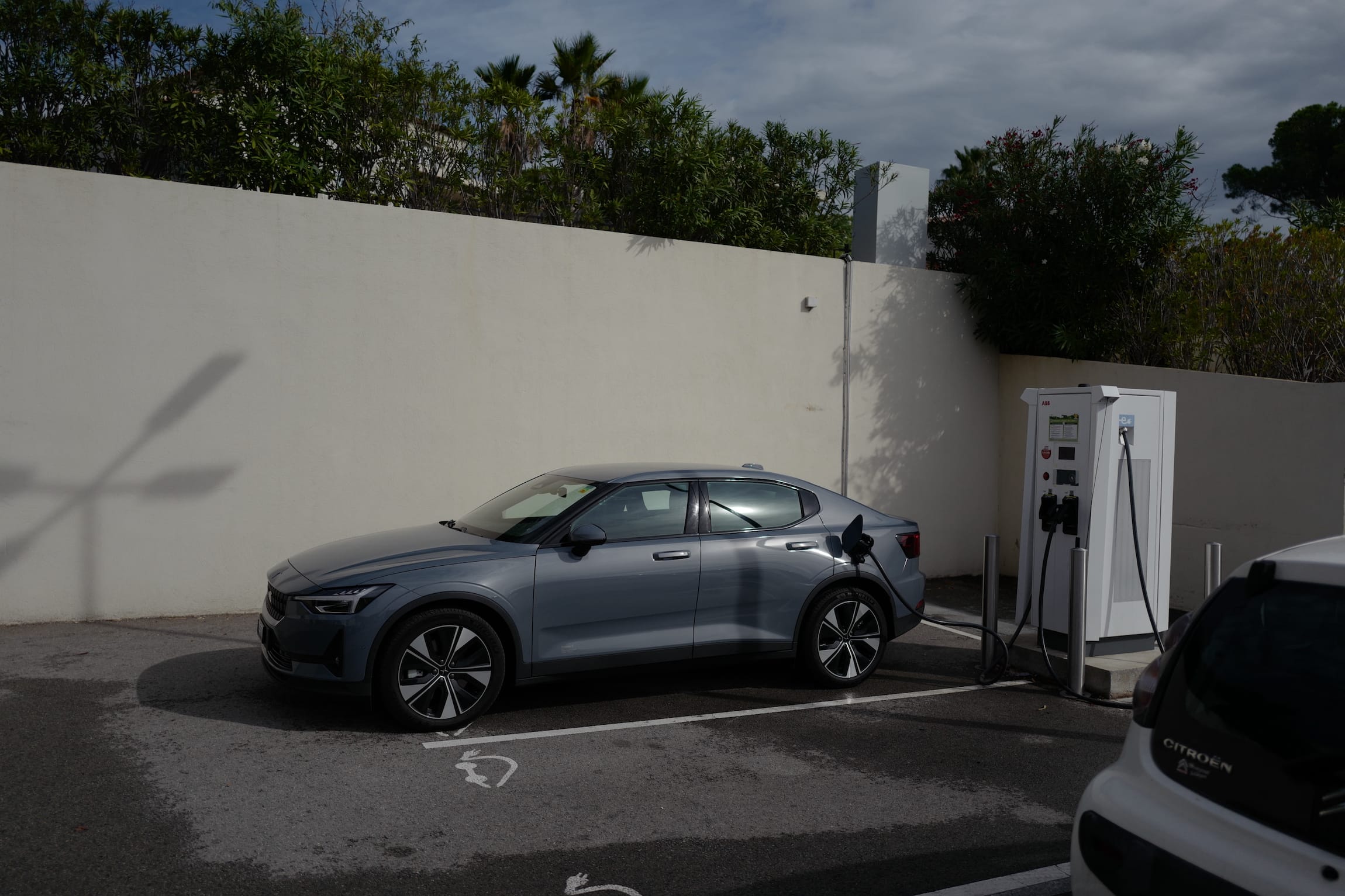
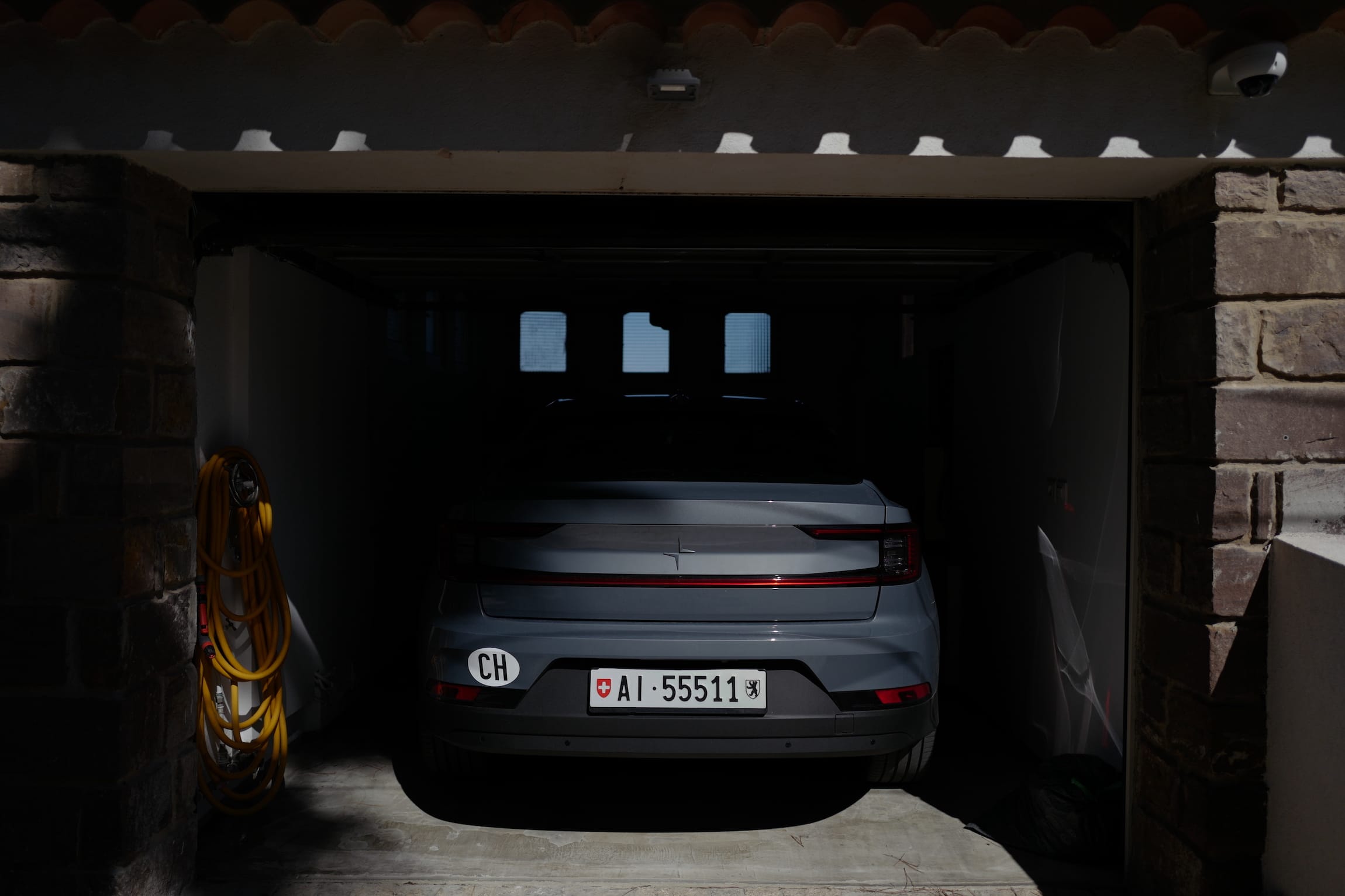
For the next two days, we drove the Polestar around town, to the beach, to go shopping. But none of the places we went to had chargers. It would have been great to top off the car in the 20 minutes it takes to buy groceries. Alas, this isn’t yet possible in Sainte-Maxime. Maybe next year!
We drove back to Zurich on Sunday morning, with 65% SoC. Not ideal. Since the outbound journey took 12 hours with lots of mountain and forest roads, we wanted to reduce the duration by swapping the routes départementales for autoroutes. Briefly after leaving, we stopped for the first charge and a coffee. The return drive was all highway, and efficiency hovered around 19kWh/100km. The homeward journey required two extra charges — the first due to leaving with ⅔ SoC, and the second because the highway is as exhausting for the car as it is to the driver.

The CCS plug to charge the car is huge and the cable is heavy. To release the plug, I sometimes had to press the button next to the charging port. There was some delay between press and release. It was unclear how this interaction was supposed to work.
Next time, I’ll stick to what Google Maps recommends. Its route planning is good, and its integration to the car means that the navigation suggests not only when and where to charge, but also for how long, and when you’re ready to leave again.
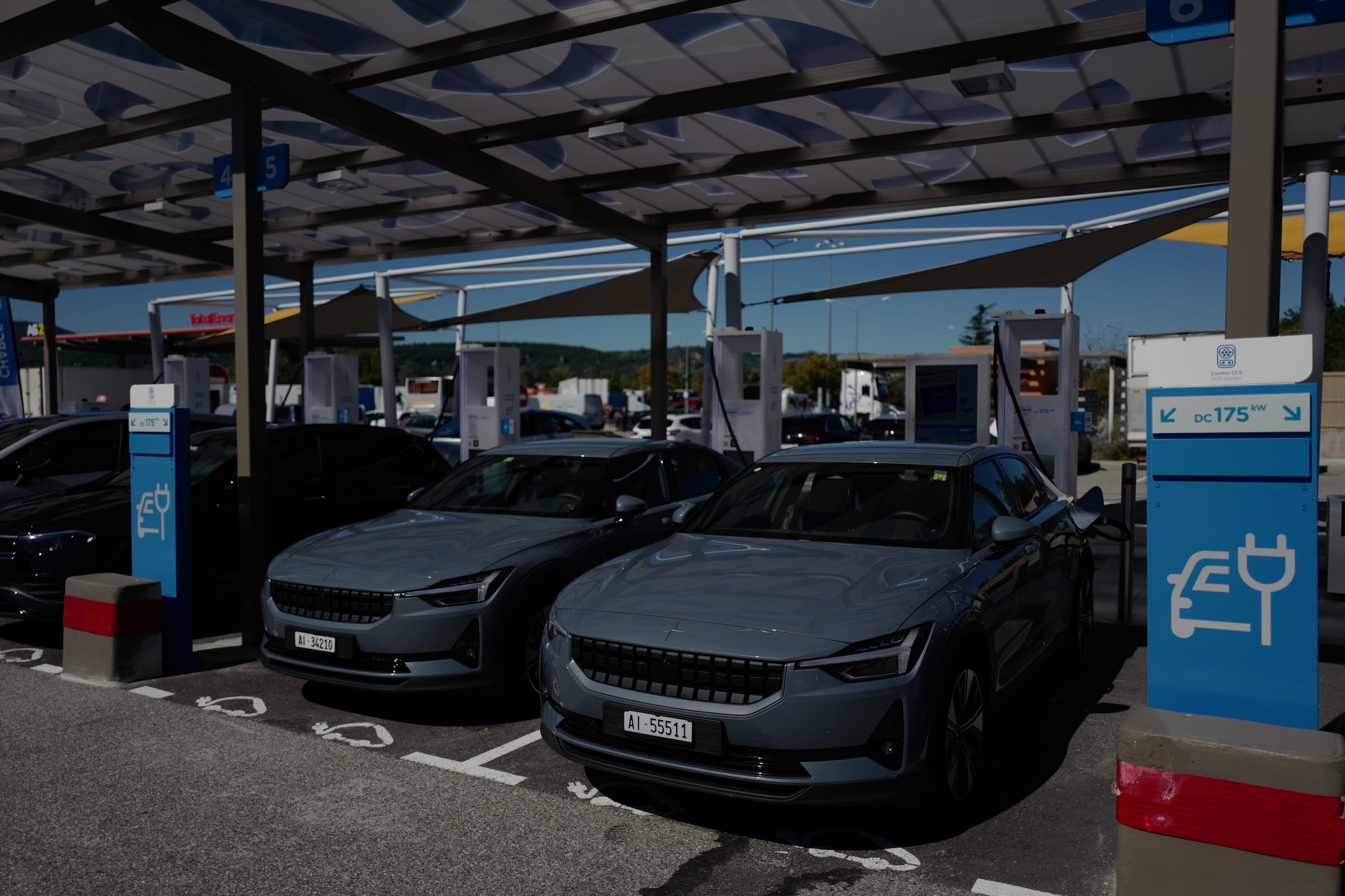
This meant that I extensively used the on-board infotainment system based on Android Automotive. I never wished for more, or different features. I realised that what I wanted from my car wasn’t necessarily phone connectivity but rather service integration, especially maps (Google) and music (Spotify). I might have chosen CarPlay to stream podcasts through Overcast, had I driven by myself. But I hadn’t, so I didn’t. On the return journey there was a brief issue with the car’s LTE connection, and we used CarPlay for music, while keeping the display on the integrated Google Maps screen. I didn’t know it was possible to use CarPlay and Android Automotive at the same time — but of course, because CarPlay is just an app rather than a mode.
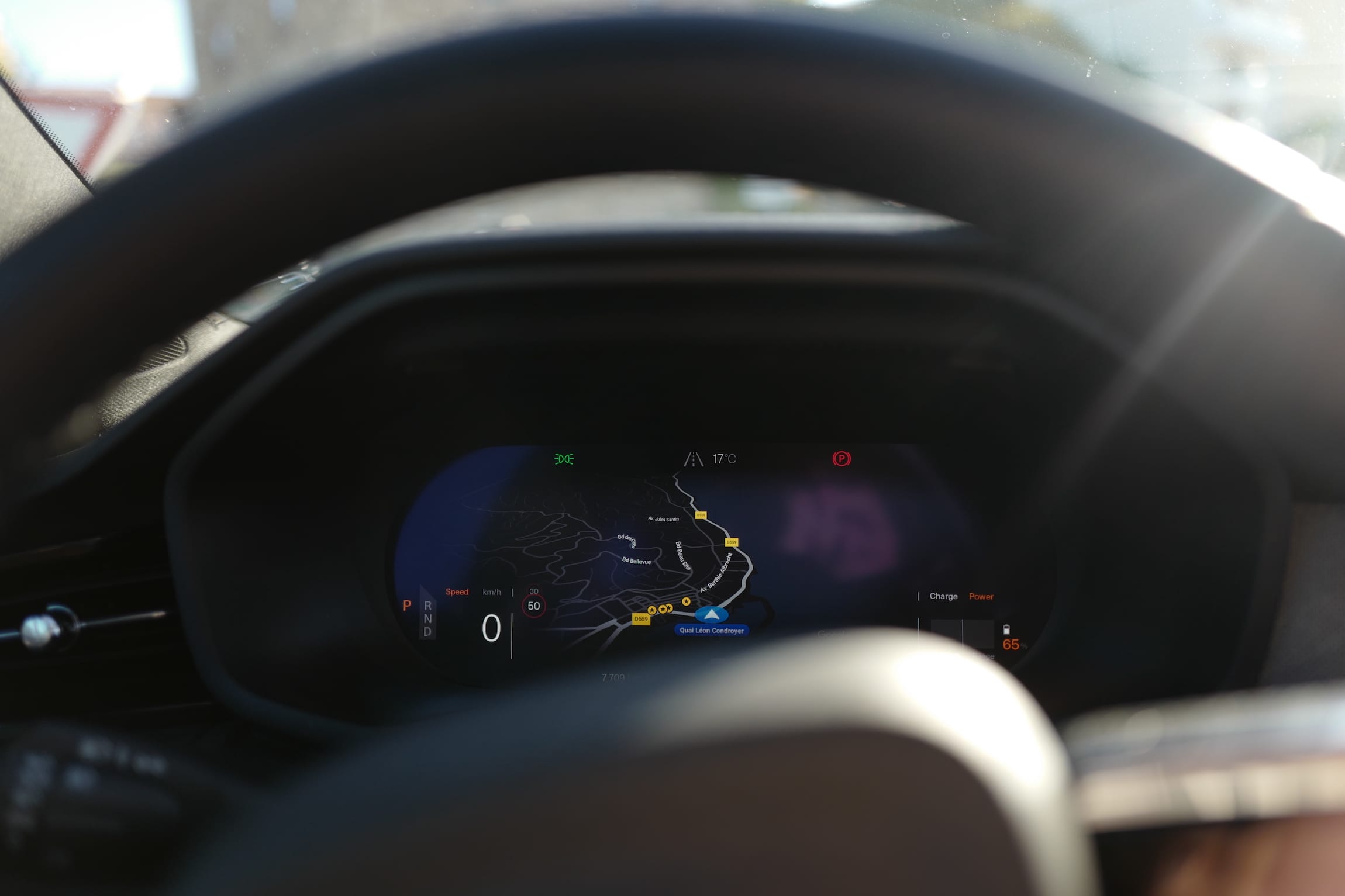
I appreciated the cluster screen, and would like to turn off the infotainment screen. While driving, I only need the next instruction displayed behind the wheel. Adaptive Cruise Control and the lane keeping feature of Pilot Assist meant that I rarely glanced down to check on my speed. Google’s voice assistant told me when to take the next exit, and only then would I look at the screen. If I wanted to change the music, however, I had to use the infotainment (touch-)screen. I could have used Google Assistant or Siri, but I didn’t. I wasn’t sure how to ask for the Spotify blend playlist I’m sharing with a friend. While driving, I found it easier to wait for a patch of road without distractions and just type things on the screen, rather than try different voice commands and annoy my passengers. Unlike CarPlay, Android Automotive apps allow for keyboard input. CarPlay uses only Siri for input, but unless your input matches the system language, things fall apart quickly. I have my phone and Siri set to English, and it struggles with French street names, or Norwegian bands. In India, Siri became bilingual. Please, Apple, let Siri match my languages.
The steering wheel has physical buttons for cruise control on the left, and media and maps on the right, easy to reach with your thumbs while keeping your hands on the wheel. Behind the wheel are stalks for indicator lights and wipers, by convention. I wished for some basic options to control the infotainment systems with the steering wheel buttons, but I don’t think that’s possible. Maybe that’s better, because it makes me use the screen less. Maybe it’s worse, because if I’m using the screen, I have to look down for touch input. I suppose the car really wants you to use your voice.

Adaptive Cruise Control works well. In a previous experience in a 2022 Audi A4, the car seemed a lot more paranoid about braking. The Polestar mostly behaved the way I would have. The automatic steering of the Pilot Assist feature is aggressive. You can feel the car turning the wheel under your hands. I went back and forth on having this feature on. It gave me the confirmation that the car was driving, but occasionally I wanted to have this control back. The switch is easy, a single button press is all that’s needed.
One pedal drive, and regenerative braking, are fantastic. The immediate acceleration is thrilling, but even cruising at a sustained speed is engaging. Every now and then, I switched to cruise control to relax my right foot, but when road conditions became more tricky, I switched back to manual control. As manual as a sensor-loaded EV can be.
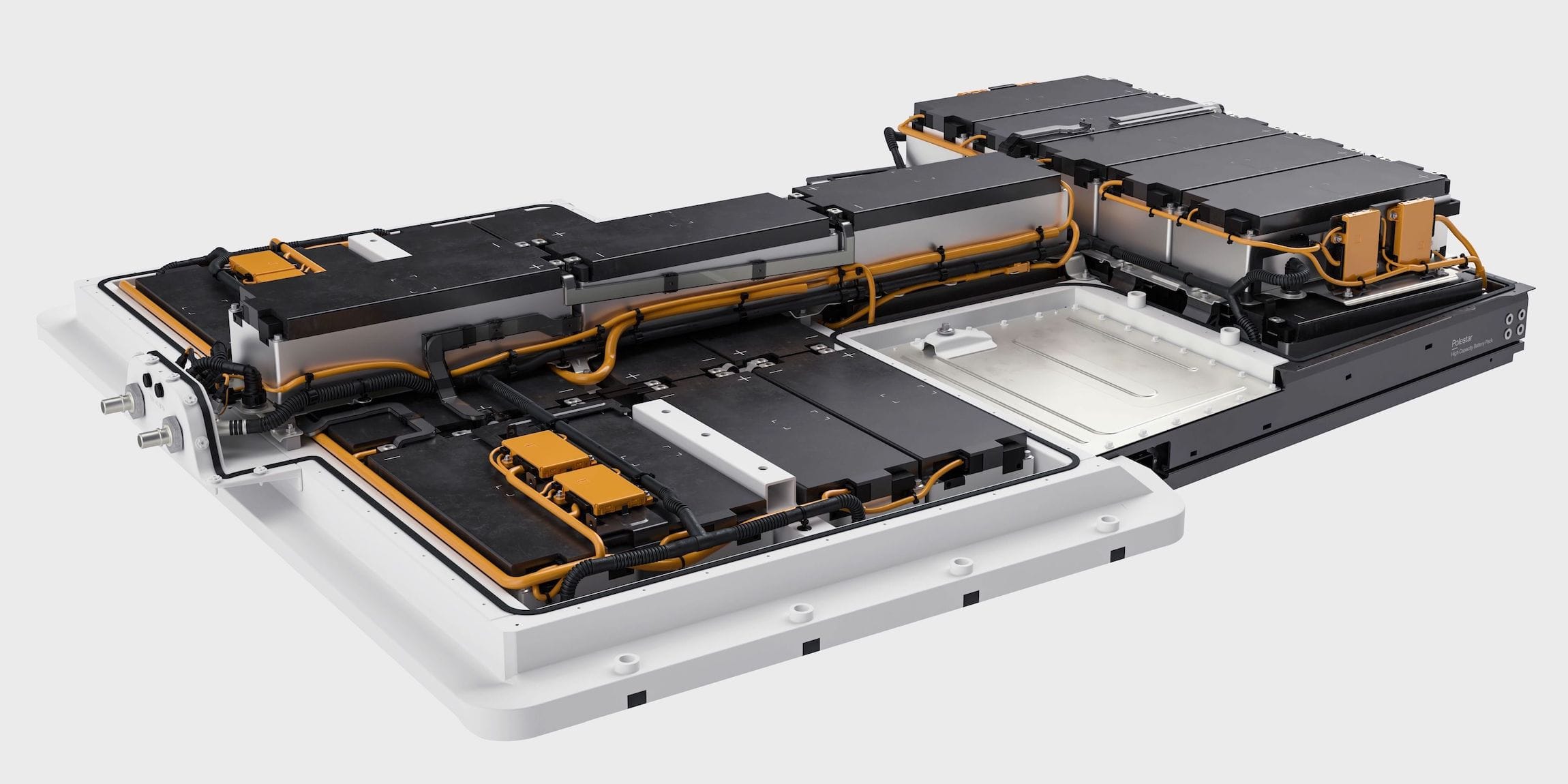
The interior is nice. Unfortunately, the car is built on the platform of its ICEV sister, the Volvo XC40, which means it has a transmission tunnel, making the interior feel cramped, as is the curse of modern cars. The gear shift feels good. I later learnt that the park button isn’t needed. If you open the door, park is automatically engaged. I’ll try that next time! As you get in, there is no ignition to get started. You just sit down, put it in drive, and go. The connected between driver and car feels more direct, even though the car is doing more.
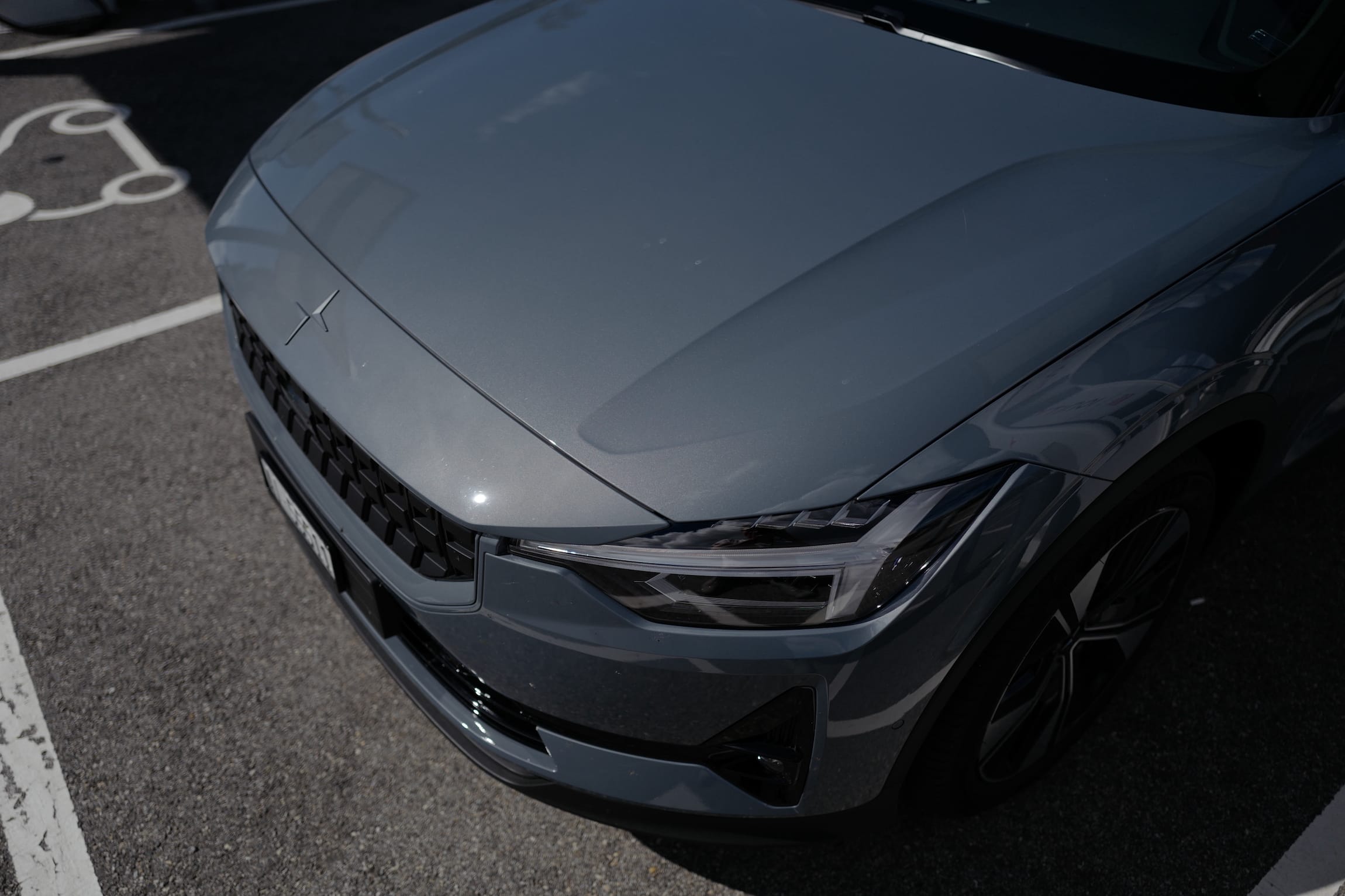
I felt sad to return the Polestar, and am looking forward to the next road-trip, in a Volvo XC40 Recharge. Both cars share the same platform, and although they have the same wheelbase, the XC40 is slightly shorter (but taller) than the Polestar. I’m curious to how it will compare, and I now want to rent a Polestar again. I’d like to try the single-motor version which has a longer range, and I’d really like to try the upcoming 2024 model, with even better range and slightly faster charging speed. I think it’s the best looking car. It’s a car-shaped car. I wish it charged faster, I wish it had a dedicated platform with a flat floor, I with the transmission tunnel wasn’t there, I wish the front seats didn’t have that huge plastic divider.
Charging infrastructure needs improvement, at least in the South of France. I need to try a Polestar in the Nordics now.
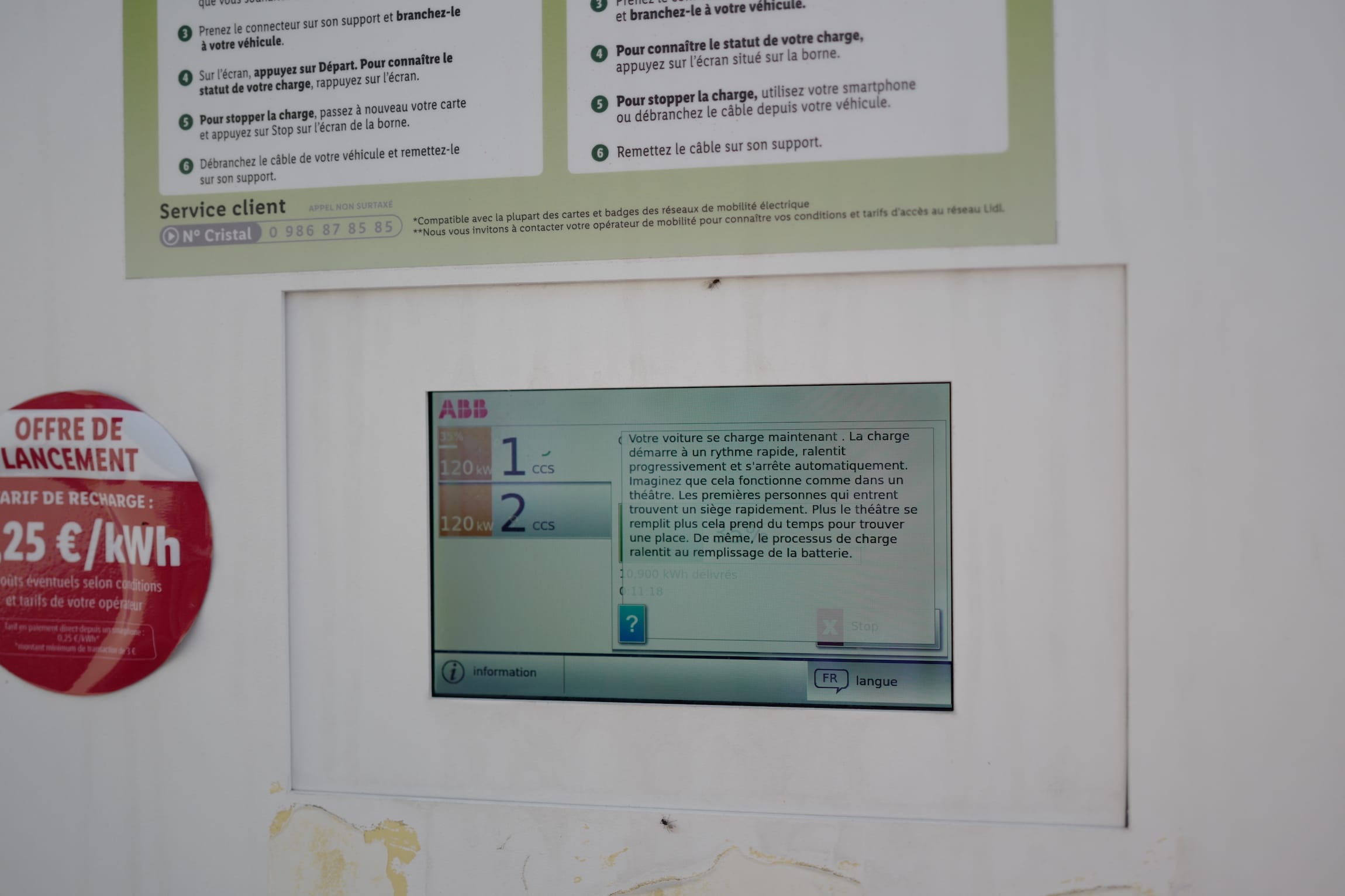
P.S. The 60kW charger disguised as a 120kW charger at Lidl explained battery technology with the metaphor of a filling theatre. The 0.25€/kWh sticker was false (or outdated) advertising. This Lidl charger was by far the most expensive of the trip.
P.P.S. In total, I spent four hours, 252kWh and 231€ charging the Polestar 2. Renting the car cost 310€ for four days. This is not an advertisement for Europcar or Polestar, and I did not receive any money from them.